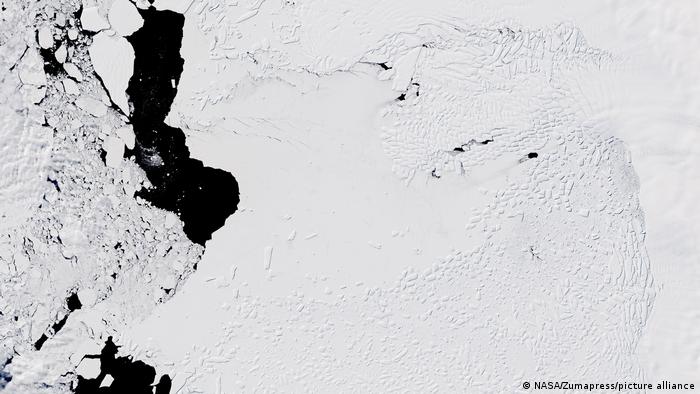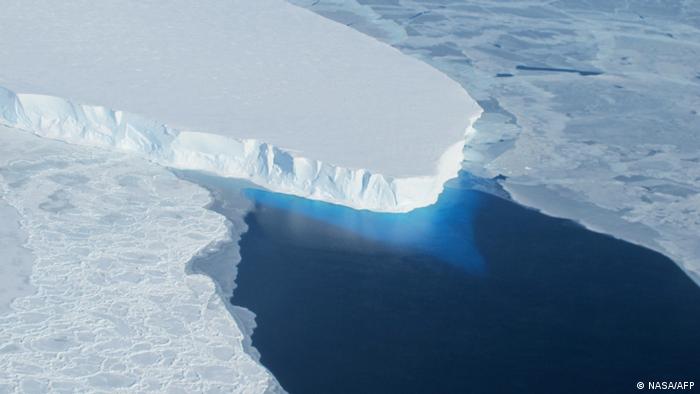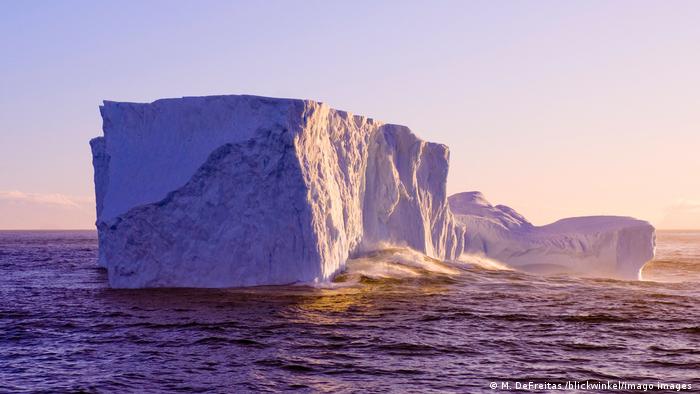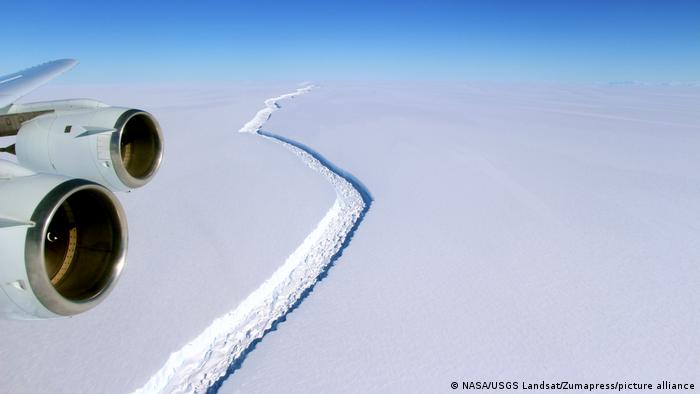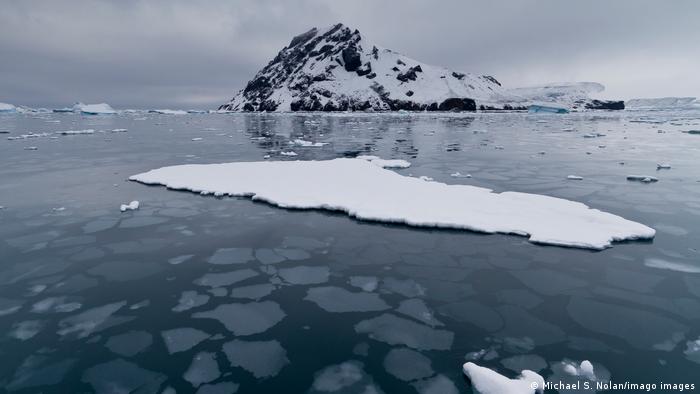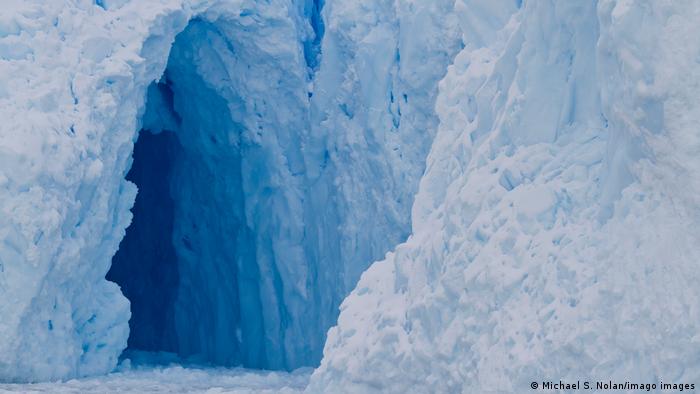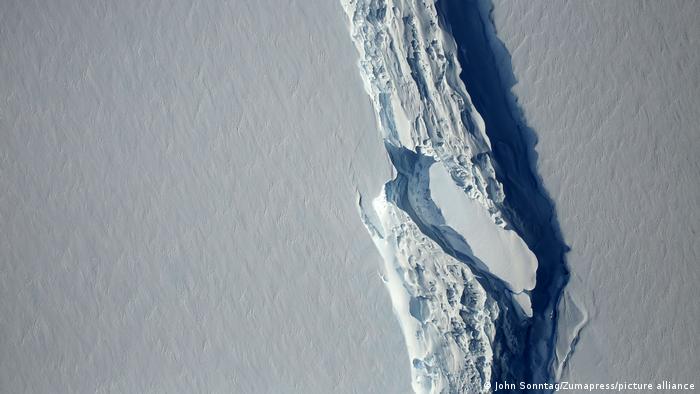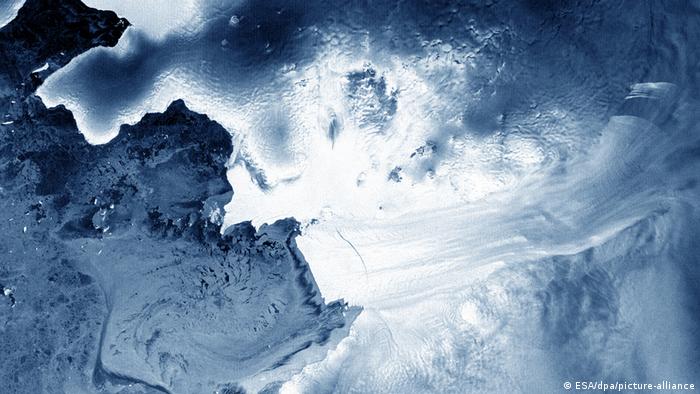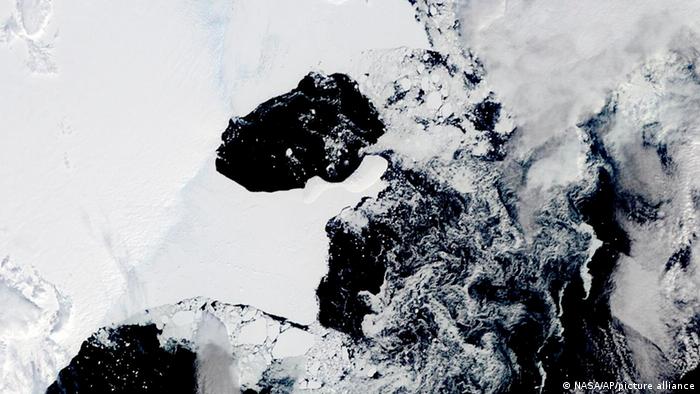According to a report published in Advances in Atmospheric Science journal, Tuesday’s Antarctic sea ice extent fell to its lowest level ever recorded.
Researchers from China’s Sun Yat-sen University, Guangzhou, and the Laboratory of Southern Marine Science, Zhuhai reported that the area of ice covered on February 22 was the lowest since 1979 when records began.
However, scientists aren’t certain of the cause of the second large drop in five years.
Global warming is causing the northern Arctic ice to rapidly decrease, but the southern Antarctic’s surface area has increased by approximately 1% per decade over the 1970s.
-
Antarctica: The Mighty Thwaites Glacier is at risk of melting
Thawing giant
Thwaites Glacier is the largest glacier of its kind in Antarctica. It covers 192,000 square kilometers and is approximately the same size as the UK. One third of glacier is made of large floating platforms, also known as ice shelves. These platforms are fracturing more frequently.
-
Antarctica: The Mighty Thwaites Glacier is at risk of melting
An ice shelf could shatter like windshield
Researchers warn that the great glacier could be in danger of experiencing dramatic changes. Researchers from the International Thwaites Glacier Collaboration project warn that it is possible for a 45-kilometer long ice shelf segment to break and shatter within three to five years.
-
Antarctica: The Mighty Thwaites Glacier is at risk of melting
Sea level rise is serious
The ice shelf prevents the glacier’s massive slippage into the ocean. It could shatter and large amounts of glacial-ice could melt into the sea. Scientists believe that a large portion of the glacier could be broken up into floating icebergs.
-
Antarctica: The Mighty Thwaites Glacier is at risk of melting
No isolated event
It wouldn’t be the first of its kind. In July 2017, the huge A68 iceberg was ripped from the Larsen C Ice Shelf in West Antarctica. Scientists are baffled by the timing of the event, which occurred during the cold Antarctic winter months. Icebergs do break apart all the time. Many believe global warming may be a factor.
-
Antarctica: The Mighty Thwaites Glacier is at risk of melting
Antarctic Peninsula Ice Shelf at Risk
Seven ice shelves that line the Antarctic Peninsula have shrunk or receded in the past twenty years. This has resulted in more ice melting into the sea, which has caused sea level to rise.
-
Antarctica: The Mighty Thwaites Glacier is at risk of melting
Warm water accelerates the thaw
Thwaites Glacier is melting because of climate change or more specifically the warming ocean. Warm water from beneath the ice shelves has caused large sections to melt, creating glacier caves. This melting process has increased dramatically over the past 30 year. Scientists closely monitor this development.
-
Antarctica: The Mighty Thwaites Glacier is at risk of melting
Breakup could lead to major sea level rise
The global sea level rise already accounts for 10% due to the melting Thwaites Glacier, Pine Island Glacier, and other factors. Sea levels worldwide would rise by approximately 65 centimeters (25in) if the Thwaites Glacier broke apart completely and released all its ice.
-
Antarctica: The Mighty Thwaites Glacier is at risk of melting
‘Doomsday Glacier’
The Thwaites Glacier’s collapse would set off a dangerous chain reaction. It could melt nearby glaciers, such as the Pine Island Glacier (pictured). Vast swathes of West Antarctica ice could melt, causing sea levels rise up to 3,3 meters. The Thwaites Glacier is often called the Doomsday Glacier.
Author: Nele Jensch
Scientists look for answers
The observation was similar to that of the EU’s Copernicus programme, which was published last month.
February’s dip occurred during the summer in southern hemisphere. It marked the first time that the ice area fell below 2 million square kilometers (around 772 200 square miles).
It also saw a 30% decrease in area compared to the average between 1981 and 2010.
Researchers have been looking into possible causes, including weather phenomena and ocean currents, but were unable to provide a conclusive answer in the report.
After a heat wave that saw temperatures reach 40 degrees Celsius (70 Fahrenheit), the 1,200-kilometer Conger ice shelf in East Antarctica was melted in February.
These ice shelves can take thousands of years to form and can release huge amounts of snow and/or ice that has been held back.

Sea levels rise as a result of melting ice at the Polar caps
According to the UN’s Intergovernmental Panel on Climate Change (IPCC), melting ice sheets from Antarctica could cause sea levels to rise, leading to millions of people fleeing their homes.
DPA contributed to the creation of this article.
Farah Bahgat edited this article

